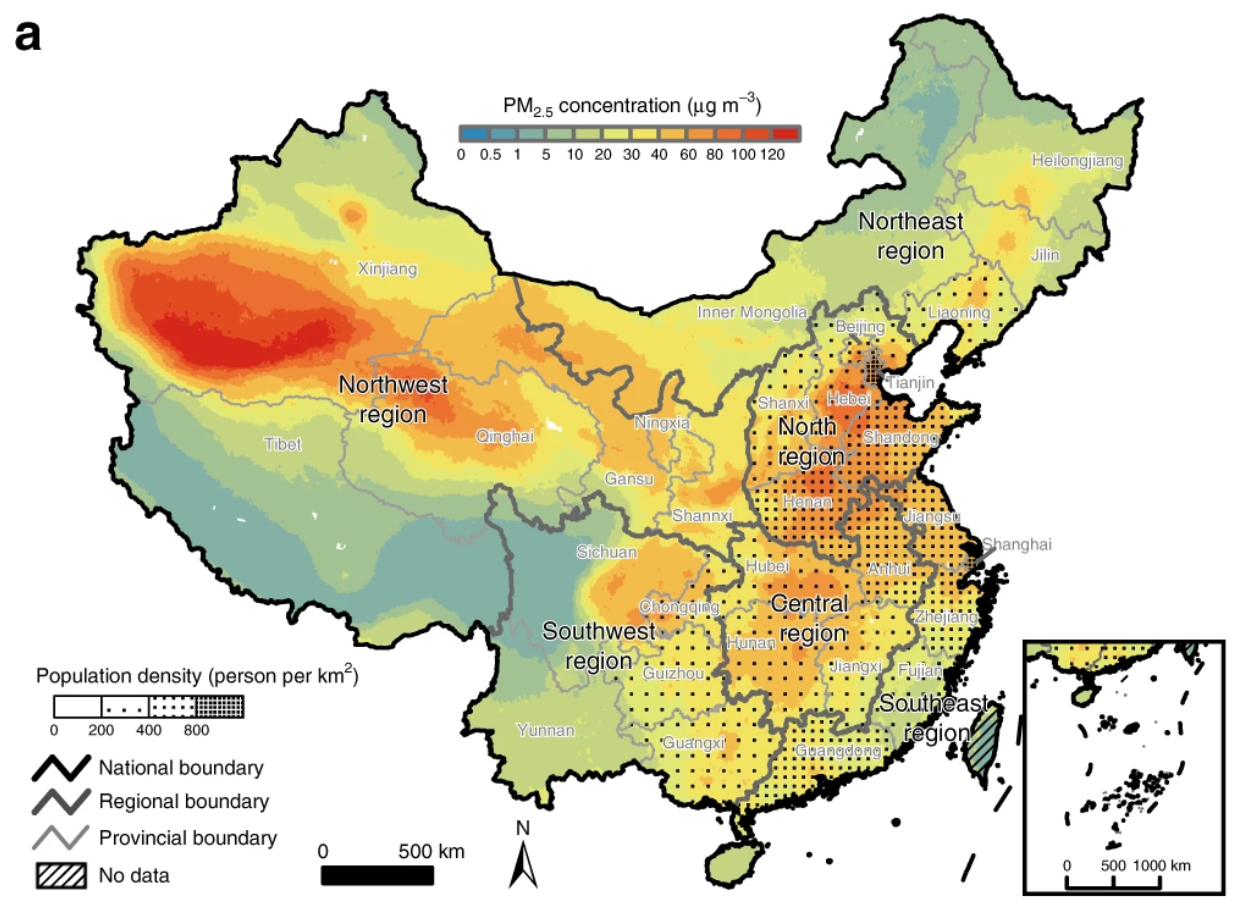Stronger policy required to substantially reduce deaths from PM2.5 pollution in China
[2020]
Authors
Huanbi Yue, Chunyang He, Qingxu Huang, Dan Yin, Brett A. Bryan
a China’s PM2.5 concentration and population density (averages from 2000 to 2017).
Article Summary
As the largest developing country, China is heavily affected by PM2.5 pollution resulting from processes of industrialization and urbanization. To reduce PM2.5 pollution, the State Council of China launched the Air Pollution Prevention and Control Action Plan in 2013 which aimed to lower PM2.5 concentration in cities by 10–25% by 2017. Costing about $270 billion, covering more than 300 cities all around China, and spanning the energy, industry, transport, legal and regulatory sectors, the Air Pollution Prevention and Control Action Plan is by far the largest air pollution control action ever implemented. In this paper, we comprehensively estimated the health effects of PM2.5 concentration decreasing resulted by this plan. One of the great strengths of this paper is that we differentiated the effect of different driving factors (i.e. PM2.5 concentration, age structure, population, death rate of diseases) on the changes in annual deaths attributable to PM2.5 pollution. Our results indicate that the Air Pollution Prevention and Control Action Plan-induced improvement in air quality achieved substantial health benefits. However, the policy is unlikely to result in further major reductions in deaths related to PM2.5 and more ambitious policies are required to reduce the health impacts of air pollution by 2030 and meet the United Nation’s Sustainable Development Goal 3 Target 3.9 substantially reduce the number of deaths and illnesses from hazardous chemicals and air, water and soil pollution and contamination.

